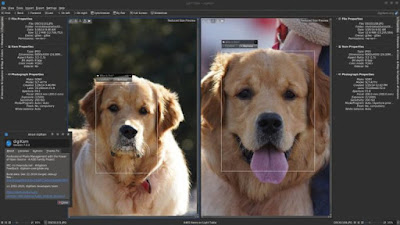We are already digiKam 7.0, the new major version of the photographic suite linked to the KDE project and one of the most outstanding applications within its segment among those that support GNULinux (although it is cross-platform).
digiKam 7.0 comes loaded with exciting new features that will help the suite gain momentum and presence. For starters, the incorporation of deep learning for face management stands out. The introduction of this feature has taken several years of work and swallowed some fiascos, but it seems that in this version it could have been activated by default.
DigiKam managers explain that the implementation of deep learning for face recognition derives from the reconstruction of a 2017 code created by a student named Yingjie Liu, who managed to integrate neural networks for face management based on the Dlib library. However, this work was in a very experimental phase and offered poor performance, so its incorporation at the production level was ruled out.
After the fiasco of three years ago, another student programmer named Thanh Trung Dinh has taken the code from 2017 and has completely rewritten it so that it is finally usable in digiKam 7.0. The suite managers explain that “the new code, based on the recent characteristics of the OpenCV library's Deep neural network, uses neural networks with previously learned data models dedicated to face management. We have saved encoding time, runtime speed, and improved the success rate, which reaches 97% of true positives. Another advantage is that it is capable of detecting non-human faces, like those of dogs. ”
The neural network model employed by digiKam 7.0 is also capable of detecting blurred, covered, profile, printed, and partial faces, all with a low level of false positives. The user will have to teach the neural network with the indication of some faces so that the application can automatically recognize them in the collection.
The other important new feature of digiKam 7.0 is the improvement of the support of RAW images from more digital cameras, among which are models from Canon, FujiFilm, Olympus, and Sony. Because the RAW format, unlike JPEG, is not standardized, application support is not as straightforward, resulting in RAW imaging applications covering only specific cameras.
Support for the HEIF image format, which was incorporated in version 6.4 of the suite, has also been improved. According to those responsible for digiKam, “HEIF is a file format for individual images and image sequences. The MPEG group claims that twice as much information can be stored in a HEIF image as a JPEG image of the same size, resulting in a better quality image. HEIF also supports animation and is capable of storing more information than an animated GIF at a fraction of the size. Compression in HEIF is delegated to an additional codec and x265 is currently supported. ”
We finish by mentioning the addition of Microsoft Visual C ++ support through a dedicated Continuous Integration workflow to compile all the code with that compiler. The intention is to publish in the future an official version of digiKam in the official store of applications for Windows.
digiKam 7.0 can be obtained for GNULinux (AppImage for 32 and 64 bits), Windows and Mac through the official website of the suite, although alternatively, you can wait until it reaches KDE neon or through some distribution rolling release. At this time in Fedora 32, you can find a beta version of the same version.









![[GUIDE] Ubuntu: how to free port 53 used by systemd-resolved](https://blogger.googleusercontent.com/img/b/R29vZ2xl/AVvXsEhTnOVoFyPFdIH_O58bx2dvTOjds0TlkTktMpMg3tW7GKuhiqyPivAPPjChpHvd-2TKm8yfhrpX_VGnBjV_e5h7HYEB9Ic07hkLGIRPF-mbsh7iFMICQwmNWAxq11PYPWz16aHUjhPCPacG/w100/ubuntu-19-04-eol.jpg)

0 Comments